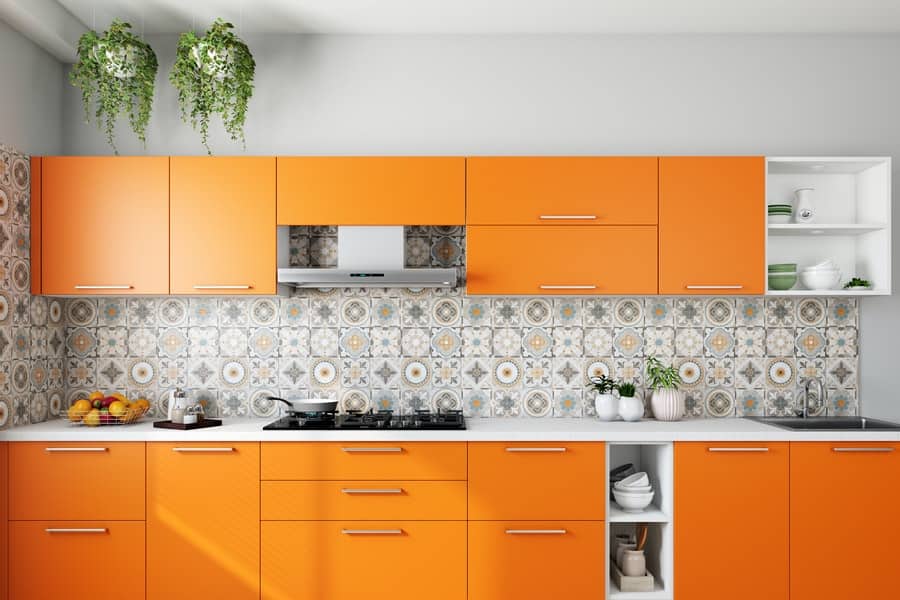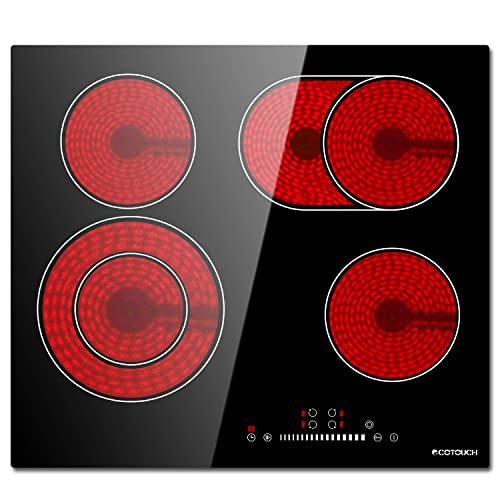A built-in stove is the type of stove mounted in the kitchen cabinet or on the countertop; if the stove is not directly on the floor, it is considered a built-in stove.
Built-in stoves are available for gas or electric application, but the most common built-in stove you’ll see in a kitchen is known as (Cooktop or Hob). These built-in cooktops provide a clean and flat surface design making them the best option when you don’t want your kitchen to look too bulky.
Related Charcoal grill made in USA
For more on charcoal grill made in USA read the full article.
Essential Factors to Consider When Buying a Built-In Cooktop
It is essential to understand the different types of cooktops available on the market. Let’s go over some important factors and considerations that I’m sure will help you to understand better when choosing the best built-in cooktop option for you, as follows:
When Buying a Built-In Cooktop Check Energy Source
The first step in buying a cooktop is to know which energy source is best for you. Cooktops are powered in two ways: The first is gas, which requires a gas line and a 110-volt power source. The second is electric, which is available in either 110 or 220 volts.
Related Cast iron Dutch oven made in USA
For more on cast iron Dutch oven made in USA read the full article.
When Buying a Built-In Cooktop Check For Measurements
The next step is to know your measurements. The correct way to measure for a replacement built-in cooktop is to make sure the gas or electricity is turned off.
If possible, lift or remove the existing cooktop so that you can measure the cutting space of the kitchen countertop. Be sure to take measurements from left to right and front to back. It is essential to measure the cut because most cooktops have a lip that extends beyond the cut’s dimensions, allowing the cooktop to sit firmly on your kitchen countertop.
You should also measure the space from the back wall to the cutout opening and the length from the front of the counter to the cutout opening.
Another important measurement is the depth space, be sure to measure from the top of the cabinet to the floor if your countertop has a downward draft below it or if there will be a new or existing oven below it. You will need the depth from the top of the cutout opening to the top of the oven. Just be sure to check your new cooktop specifications to make sure you’ve left enough space between the cooktop and the existing or new oven.
What Are The Different Types of Built-In Cooktops?
You can now discuss the types of built-in cooktops available on the market, including Gas, Pro Range Top, Electric, and Induction.
How Does a Built-In Gas Cooktop Work?
Built-in gas cooktops are available in various sizes ranging from 12 to 46 inches wide and can be purchased with one, two, four, five, or six sealed burners. Sealed burners make today’s built-in gas cooktops much easier to clean than those of the past.
Most standard gas cooktops will have at least one high-powered burner ranging from 11 to 20,000 BTUs. BTU stands for British Thermal Units; it measures heat production applied to the energy generated by gas cooktops and the range-tops. One BTU is the volume of heat needed to raise one cup of water temperature by one degree Fahrenheit.
How Does a Built-In Pro Range Cooktop Work?
Built-In pro range cooktops work much like standard gas cooktops, except at a much higher level. They are in sizes from 30 to 48 inches wide with the option of having 4 to 8 burners or 2 to 4 burners with the grill top or French clock included.
What Is The Difference Between a Built-In Cooktop and Pro Rangetop?
Built-in Cooktops sit on top of the kitchen counter and are usually no taller than 4 to 5 inches, which allows you to have a drawer or an oven underneath them.
Built-in Pro Rangetops slide into the kitchen counter and cabinet, typically have a foot height ranging from 7 1/2 to 10 1/2 inches, and because of the higher foot height, pro-range-tops cannot be installed over an oven.
Pro-range-tops are available in gas-only and all burners on a professional range-top will be high-performance burners. Also, pro-range-tops will cost significantly more than gas cooktops and will require more detailed installation.
How Does a Built-In Electric Cooktop Work?
Built-in electric cooktops require a 220 connection in your home and, like standard gas cooktops, can be installed on top of your kitchen countertop with a new or existing oven underneath.
They are available in sizes ranging from 12 to 45 inches with the availability of one to six burners. Built-in electric countertops have three main options, including Coil, Ceramic glass, and Induction.
How Does a Built-In Coil Cooktop Work?
The coil burner cooktops have exposed electric heating elements that radiate heat to the pan. The coils are easy to remove for cleaning and come with chrome drip pans and knobs that are also removable. Coil cooktops take longer to clean but are the least expensive of the three options listed above.
How Does a Built-In Ceramic Glass Cooktop Work?
Built-in ceramic glass cooktops work the same way as coil cooktops, except that the coils are underneath the glass, making these cooktops much easier to clean. These ceramic glass cooktops have no removable parts except for the knobs on some models, making them virtually maintenance-free. Ceramic glass countertops are the most common of the three types listed above and can be used with any kitchen utensil, including cast iron.
How Does a Built-In Induction Cooktop Work?
Built-in induction cooktops are similar to ceramic glass cooktops in appearance and are easy to clean. But unlike the coil and ceramic glass cooktops, a built-in induction cooktop uses magnetic fields to induce a heating reaction in steel pots and pans, allowing the pot to heat the food and not the cooking surface. They use less energy than the standard coil and ceramic cooktop and heat up faster and cool down instantly.
Built-in induction cooktops require the use of flat-bottom magnetic pans to operate. The best way to know if your current built-in cooktop will work with an induction lid is to place a magnet on the pan’s bottom; if the magnet sticks to your existing cooktop, it will work with the induction.
Here is something else to consider when purchasing a built-in induction cooktop. Most standard coils and ceramic glass cooktops can operate at 15 to 40 amps, depending on the kitchen’s size. Almost all built-in induction cooktops 30 to 36 inches or more will require a 40 to 50 amp circuit to operate. So consider this when thinking about replacing your current ceramic or coil top with induction.
Related: Microwave fan won’t turn off (Solved)
Four Reasons Why You Should Consider Induction Cooktops
Let’s review the four main reasons you should consider induction cooking for your next home kitchen remodel. However, before reviewing the four reasons, let me encourage you to go to a dealer who has an induction unit in operation and get a demonstration for yourself. Once you see it and feel it and touch it and experience it, you will sell yourself.
Here are the main four reasons why you should consider induction cooking as follows:
- The first reason is speed; this is why people choose induction; it is 50% faster to heat than gas; it is impressive.
- The second reason is heat; you know, because this uses magnet technology and heats the pan and not the air around you, you end up with a much cooler kitchen when you use the induction stove. When using gas, about 60% of the gas burner’s heat is lost in the kitchen, only 40% goes into the pan. The opposite induction, almost 90% of that heat goes into the pan, a big problem in our hot cooks here in America.
- The third reason is safety; if you are cooking with gas, when you are burning that gas, you need to run your fan all the time. Because when you burn that gas, there are all kinds of noxious gases coming out, and you don’t want them to stay in your house. Most people are not using their fans, which means that your house’s indoor air quality goes down a lot when cooking with gas. When cooking with induction, there is nothing to worry about; there are no safety issues with induction cooktops.
- The fourth reason is low-cost utility expense; some homeowners are putting in solar power or doing solar pre-wiring to add it in the future. And if you have an induction cooktop or are ready for that, I mean, if you’ve noticed, but on your gas bill, the gas company charges a pretty high premium every month to have a gas line to your house, and I don’t think that’s necessary.
Some new technologies are coming out, like the Tesla home battery system. That could mean you could ultimately unplug my house from the grid someday.
You could be making energy during the day be stored in that battery, and at night you could be cooking with your induction cooktop and being powered by your pretty nice Tesla battery. Very impressive!!






